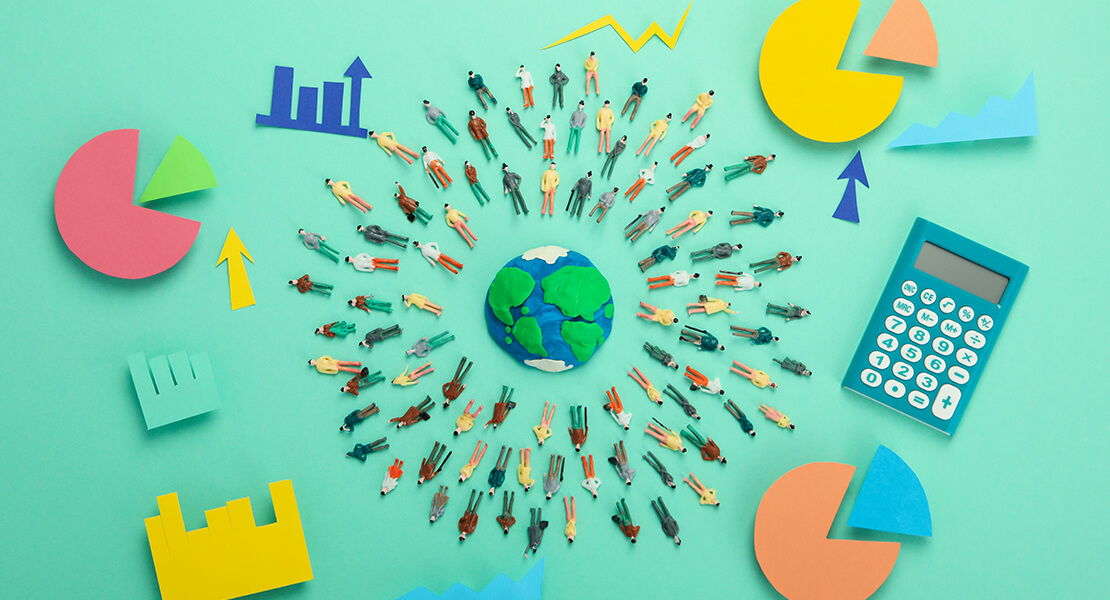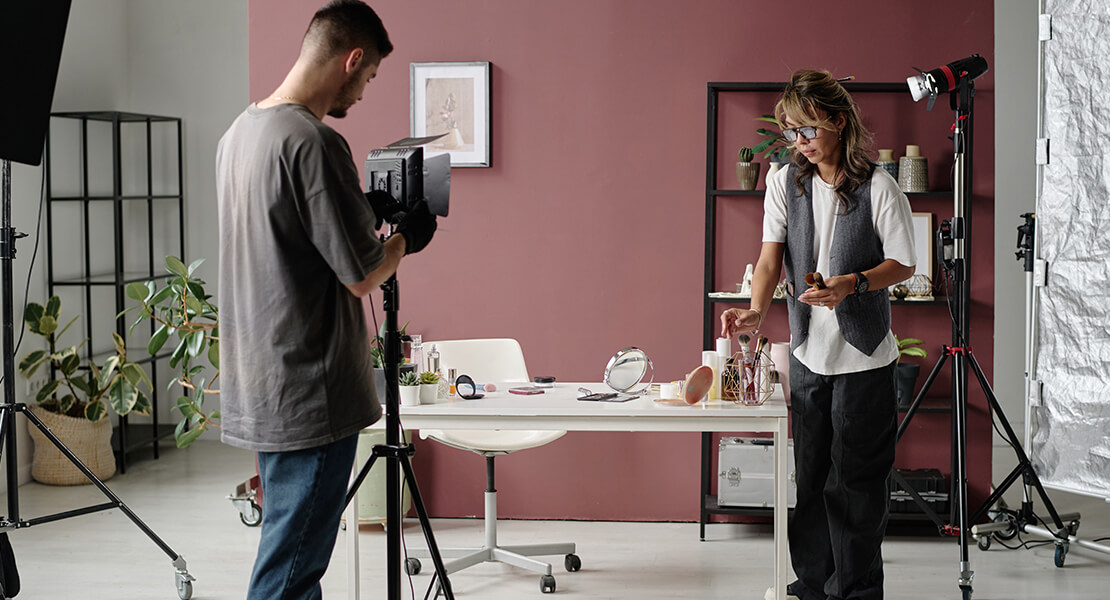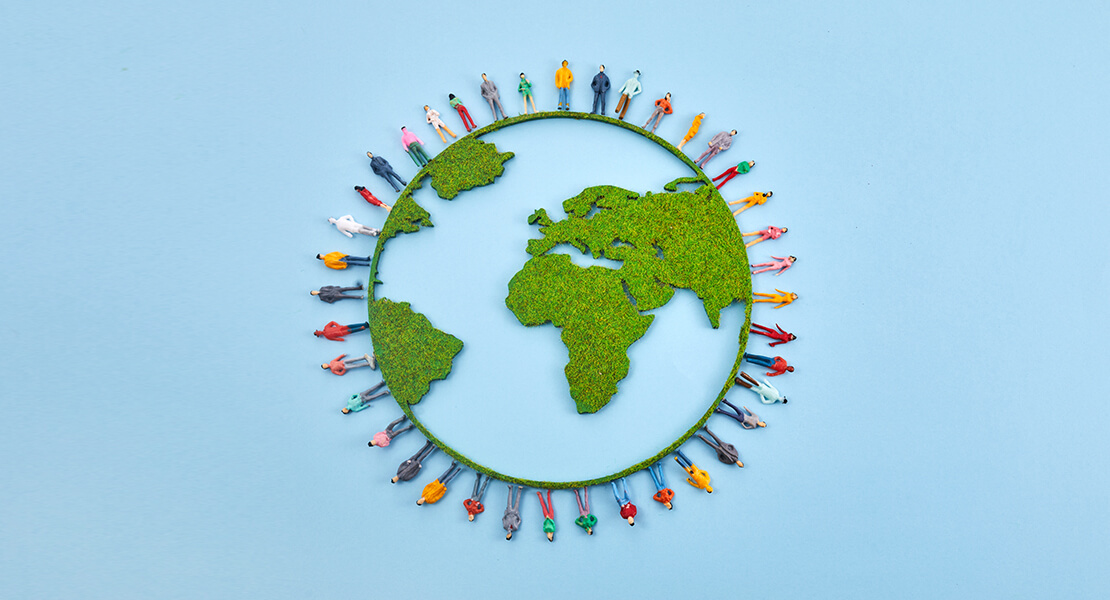
Let’s face it—video production has historically had a bit of a carbon footprint problem. Think of the travel, the lighting rigs, the single-use set materials, and the energy-hungry equipment. Now more than ever, brands, agencies and creators are waking up to the reality that the way we produce content matters just as much as the message itself. That’s where sustainable video production comes in.
The shift isn’t just driven by regulation or corporate policies—it’s coming from audiences, too. People are more environmentally aware than ever, and they’re actively choosing to support brands that reflect their values. That means if you’re still producing content with a throwaway mindset, you’re not just harming the planet—you’re hurting your reputation. Your audience expects more than just clever slogans. They want proof that your brand genuinely walks the walk.
And it’s not just about environmental responsibility. Embracing sustainable video production often brings surprising benefits. You may find your shoots become more efficient, your budget stretches further, and your team operates with more purpose. Sustainable practices encourage innovation—and in an industry that thrives on creative problem-solving, that’s no bad thing.
If you’re involved in creating video content—whether you’re part of a small team or running big campaigns—it’s time to get serious about making your productions greener. Sustainability isn’t just a buzzword anymore. It’s becoming a baseline expectation. And that expectation will only grow stronger as the industry evolves.
So, what exactly does sustainable video production look like, and how can you actually do it without compromising on quality or creativity? Whether you’re producing a five-minute brand video or a multi-location shoot, there’s always a way to make things cleaner, smarter, and more responsible.
Let’s break it down.
What Is Sustainable Video Production?

Sustainable video production is all about reducing the environmental impact of creating video content. That means looking at every part of your process—from pre-production planning to post-production delivery—and asking: how can we do this with less waste, less travel, less energy, and more awareness?
It’s not about being perfect. It’s about being intentional. Sustainability in video production means being conscious of your choices at every step of the way. Do you really need to fly that drone team halfway across the country? Can you source props locally instead of shipping them in? Can your lighting setup be powered more efficiently? These are the questions that help define a sustainable approach.
It’s also about empowering your crew and clients to think differently. That could mean hiring eco-conscious freelancers, reusing materials from previous shoots, or even committing to zero-waste policies on set. It’s the small changes that add up over time—not just for one shoot, but across an entire year’s worth of projects.
Sustainable production also means considering the digital impact of your work. From how you store and share files to how you deliver the final video, there are opportunities to reduce digital energy consumption—an often overlooked part of the equation.
And let’s be clear: sustainable doesn’t mean boring, limited, or low-budget. It means efficient, considered, and future-facing. You can still produce high-impact, visually stunning content—just with a lighter footprint. In fact, embracing sustainable practices can become part of your brand story. It shows you’re thinking ahead, leading by example, and proving that creativity and responsibility can absolutely go hand in hand.
Why It Matters Now More Than Ever
Audiences are becoming more conscious—and more critical—of how content is made. People don’t just care about what your brand says; they care about how you behave. If you’re shouting about climate change in your latest ad but flying a crew halfway around the world to film it, trust me, your audience will notice.
This kind of contradiction doesn’t just spark criticism—it erodes trust. Today’s viewers are savvy, socially aware, and increasingly vocal. They know when something doesn’t add up, and they’re not afraid to call it out. If your brand values include sustainability, then your video production process needs to reflect that. Authenticity matters, and it’s not just about optics—it’s about responsibility.
Sustainability is also becoming a key part of corporate responsibility. Investors, clients, and consumers are all paying attention to environmental practices, and content creation is no exception. The spotlight is shifting from just “what you make” to “how you make it.” Agencies and production houses that can demonstrate eco-conscious workflows are more likely to win business, especially from companies with ESG (Environmental, Social, and Governance) targets.
There’s also the legal and regulatory side to consider. Environmental reporting requirements are tightening across industries, particularly in the UK and Europe. By embedding sustainability into your content creation now, you’re future-proofing your operations and staying ahead of legislation that’s only going to become stricter.
And here’s the unexpected bonus—going greener can often save you money. Fewer flights, fewer props, less waste—it all adds up. Streamlining logistics, renting instead of buying, and reducing power usage can noticeably cut costs over time. And that’s before you consider the reputational value: being known as a forward-thinking, environmentally aware brand can open doors to partnerships, press opportunities, and loyal customers who want to support companies doing the right thing.
How to Make Your Video Production More Sustainable

Here’s where we get practical. Sustainability isn’t about perfection—it’s about progress. Every small step you take can make a big difference over time. So let’s look at how you can build a more sustainable production process from the ground up.
1. Pre-Production: Plan with Purpose
Start by making sustainability part of the conversation in the planning stage. That means:
- Choosing local: Hire local crew and talent where possible to avoid unnecessary travel. Not only does this reduce your carbon footprint, but it also supports the local economy. Plus, local professionals often bring valuable insight into nearby resources, venues, and suppliers.
- Rethinking locations: Can you shoot in a studio or location you already have access to, instead of flying somewhere? Using existing or multi-purpose locations minimises transportation needs and set build requirements. It also helps keep your footprint smaller by reducing energy and material use on site.
- Using digital tools: Virtual location scouts, video calls, and digital call sheets cut down on paper and travel time. Remote collaboration tools mean fewer face-to-face meetings without sacrificing productivity. Going digital from day one streamlines communication and keeps everything easily accessible.
Planning efficiently also means fewer reshoots and tighter shoot days—so you’re using time, energy and resources more effectively. A strong pre-production process doesn’t just make your project greener—it makes it smoother, faster, and more professional from start to finish.
2. Production: Reduce, Reuse, Rethink
On shoot day, there are loads of ways to be more eco-friendly:
- LED lighting: These use far less energy than traditional setups and generate less heat. That means you’ll use less electricity and need less cooling, which is especially useful in indoor or studio environments. They also last longer, reducing the frequency of replacements and minimising e-waste.
- Power management: Use rechargeable batteries and consider portable solar units for outdoor shoots. This helps cut down on disposable battery use and ensures you’re not draining the grid unnecessarily. Some productions even carry their own solar generators to remote locations—compact, quiet, and surprisingly powerful.
- Set design: Avoid building sets that get torn down the next day. Use modular designs or reuse materials where possible. Sourcing reclaimed wood or hiring set pieces can give your production a polished look without the waste—and many suppliers now offer eco-conscious options specifically for film and video.
- Catering: Go for reusable cutlery and dishes, avoid plastic bottles, and source food from sustainable providers. You could also consider a vegetarian or plant-based menu for one or more shoot days—it significantly reduces the environmental impact of your catering. Encourage crew to bring their own refillable water bottles and provide a water station on set.
You can also create a “green checklist” for the crew—simple reminders like turning off unused equipment, recycling properly, and limiting single-use plastics. It helps keep sustainability front of mind and makes it a shared responsibility across the team.
3. Post-Production: Keep It Digital and Efficient
Post-production can be greener too, especially in today’s cloud-connected world:
- Remote collaboration: Editors, sound designers, and colourists can all work from different locations—no need for extra travel. Not only does this reduce emissions, it also gives you access to a wider talent pool. Tools like Frame.io, WeTransfer, and Zoom make collaboration smooth and easy from anywhere.
- Cloud storage: Reduce physical drives and DVDs by keeping everything digital. Cloud services are scalable and secure, allowing teams to share large files without the need for hard copies. You’ll also save money on shipping, packaging, and storage over time.
- Green data centres: Choose post-production partners that use energy-efficient data servers or carbon-neutral platforms. Some providers publicly commit to using 100% renewable energy, which makes a big difference over long-term projects. A quick check of your vendor’s sustainability policy can guide more responsible choices.
- Delivery: Send final assets digitally. If physical copies are needed, use recyclable packaging and minimal print materials. Avoid glossy finishes and laminated print, and opt for FSC-certified paper where print is necessary.
The key here is to think lean—get what you need done with as few physical resources as possible. A streamlined, digital-first approach isn’t just greener—it’s also faster and more adaptable to remote working setups.
4. Offset What You Can’t Avoid
Even with the best intentions, some emissions are hard to eliminate. That’s where carbon offsetting comes in. You can support verified carbon offset schemes that plant trees, restore ecosystems, or invest in renewable energy projects. It’s not a magic fix, but it’s a step in the right direction—especially when paired with the practical actions listed above.
Offsets work by funding projects that reduce greenhouse gases elsewhere, balancing out your own unavoidable emissions. Think of it as putting something positive back into the system to counterbalance the damage. But not all carbon offset programmes are created equal. It’s important to choose reputable, transparent schemes that follow international standards like Gold Standard or Verra. These ensure that the projects actually deliver the promised benefits, both environmentally and socially.
Offsetting can also support communities in developing countries by bringing clean energy, improving air quality, or creating jobs. So while reducing your own carbon footprint should always be the priority, offsetting what you can’t avoid adds value and drives change on a global scale. It’s about taking responsibility and using your influence—however small—to support a more sustainable future. Every bit counts, and offsetting helps bridge the gap between intention and impact.
Tools and Resources to Help You Go Green
The good news? You’re not on your own. There are tools and certifications designed specifically for sustainable production:
• AdGreen (UK-based) – Offers carbon calculators and guidance for low-impact shoots. It helps you estimate and reduce the carbon footprint of each production by providing tailored advice and tools. Their free resources also include tips on supplier selection, transport efficiency, and waste management—all geared towards UK-based shoots. AdGreen also collaborates with industry partners to collect anonymised data, helping the wider sector benchmark and improve. They run regular workshops and webinars to upskill teams on greener practices. If you’re working in advertising, AdGreen is fast becoming the go-to sustainability resource.
• Albert Sustainable Production Certification – A BAFTA-backed scheme widely used in British film and TV. It offers training, production tools, and a recognised stamp of approval to show that your project meets sustainability standards. Many broadcasters and funders now require Albert certification as part of their commissioning criteria, making it essential for long-form and broadcast projects. Albert also provides a comprehensive carbon calculator tailored for scripted and non-scripted content. Their creative guidance toolkit encourages storytellers to embed climate themes into content itself—not just the production process. Signing up is free, and their support team is hands-on if you need help getting started.
• Green The Bid – A global initiative supporting sustainable practices in commercial production. It brings together agencies, brands, and production companies to share resources, set expectations, and push for industry-wide change. Their community-driven approach makes it easier to embed green thinking into every phase of a campaign, from pitch to delivery. They offer practical checklists, supplier directories, and case studies to help you take action. Membership is free and gives you access to monthly forums and peer support. Green The Bid is especially helpful for agencies looking to embed sustainability across multiple clients and projects.
These resources give you frameworks to measure your impact and improve on it with each project. Whether you’re just starting out or looking to formalise your sustainability efforts, these tools can help you turn good intentions into real, measurable progress.
Telling the Story of Your Sustainability

Don’t keep your green efforts a secret. Be transparent and proud of the changes you’re making. Share behind-the-scenes photos showing your low-waste setup. Mention in your credits that your shoot was carbon-conscious. Let your audience know that your values go beyond the frame.
This kind of openness builds trust and shows that you care—not just about the final product, but about how it’s made. Audiences today are paying attention. They want to know that the content they’re watching doesn’t come at the expense of the planet. Whether it’s switching to rechargeable batteries, using LED lighting, or carpooling to set, every small step tells a story. Document it. Celebrate it. And most importantly, be honest.
But remember: authenticity matters. Don’t greenwash. Only shout about your eco credentials if they’re backed by real action. People can spot empty claims a mile off. So keep it real, and make sure your efforts are meaningful, not just marketable.
Final Thoughts: Do What You Can, Start Where You Are
Sustainable video production doesn’t mean scrapping your creative ambition or investing thousands you don’t have. It means thinking smarter, being intentional, and starting with what you can control.
Can you shoot in natural light instead of lugging in a power-hungry rig? Can you source props second-hand? Can you minimise travel by using local talent or remote tools? It’s not about perfection—it’s about progress.
If every creator, brand and production team makes small shifts towards greener practices, the collective impact could be huge. And as expectations grow—from audiences, clients and the planet—it’s better to lead the change than scramble to catch up.
There’s a growing community of eco-conscious filmmakers out there, and more resources than ever to help you reduce your impact. So next time you’re planning a shoot, ask yourself: how can we make this one better for the environment than the last?
Because sustainability isn’t a side note anymore—it’s the new standard. And you don’t have to do everything at once. Just start. And if you’re interested in taking your business to the next level with video production, feel free to get in touch with us here at Spiel—we’d love to help.

